
Cycnia is a genus of tiger moths in the family Erebidae. The genus was erected by Jacob Hübner in 1818.

Chytolita is a monotypic litter moth genus of the family Erebidae erected by Augustus Radcliffe Grote in 1873. Its only species, Chytolita morbidalis, the morbid owlet moth or morbid owlet, was first described by Achille Guenée in 1854. It is found in large parts of North America, from coast to coast in the north and south to North Carolina, Texas and Florida in the west. The habitat consists of deciduous woods and edges.

Copablepharon is a genus of moths of the family Noctuidae.

Diphtherinae is a monotypic subfamily of moths in the family Nolidae erected by Michael Fibiger and J. Donald Lafontaine in 2005. Its only genus, Diphthera, was erected by Jacob Hübner in 1809. The genus was moved from Noctuidae in 2013 after the phylogenetic analysis of Reza Zahiri et al. (2013).

Drasteria is a genus of moths in the family Erebidae.
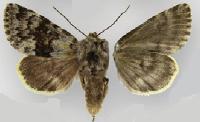
Lasionycta is a genus of moths of the family Noctuidae.

Marimatha is a genus of moths of the family Noctuidae. The genus was erected by Francis Walker in 1866.
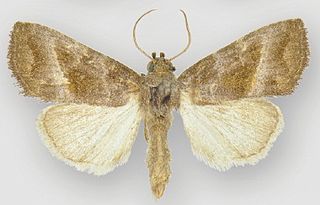
Ogdoconta is a genus of moths of the family Noctuidae.

Prosoparia is a genus of moths of the family Erebidae. The genus was erected by Augustus Radcliffe Grote in 1883.
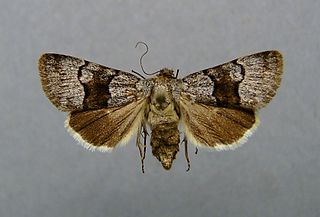
Sympistis is a genus of moths of the family Noctuidae. The genus was erected by Jacob Hübner in 1823.
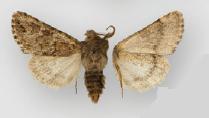
Tricholita is a genus of moths in the family Noctuidae.

Autographa sansoni, the Alberta beauty, is a moth of the family Noctuidae. The species was first described by F. H. Wolley Dod in 1910. It is found in the western mountains of North America, from Alaska south to Oregon, Idaho and Arizona. Occurring mainly in the Pacific Northwest, it thrives in mid-to-high elevation conifer forest habitat, as well as some areas of coastal rain forest in the Coast range. However, it is also found in a non-contiguous range in sub-alpine forest in the Rocky Mountains, ranging from Alberta in the north, to New Mexico in the south. The wingspan of an adult ranges between 34 and 36 mm. It is widespread, and a relatively common species.

Copablepharon grandis, the pale yellow dune moth, is a moth of the family Noctuidae. The species was first described by Strecker in 1878. It is found in North America from southern Alberta east to south-western Manitoba, the eastern parts of South Dakota, North Dakota and Iowa, west to California and south to southern Arizona, New Mexico and western Texas.
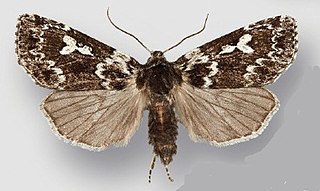
Xestia perquiritata, the boomerang dart, is a moth of the family Noctuidae. The species was first described by Herbert Knowles Morrison in 1874. It is found across North America from Newfoundland, Labrador and northern New England, west to central Yukon, British Columbia and Washington. There are several disjunct populations, including one in the Great Smoky Mountains National Park and the Rocky Mountains in Colorado and a coastal bog in central Oregon.
Euxoa auripennis is a moth of the family Noctuidae first described by J. Donald Lafontaine in 1974. It is found in western North America from eastern North Dakota and south-western Manitoba west to central British Columbia, south to southern California and Colorado.

Copablepharon canariana is a species of moth in the family Noctuidae. The species was described by James Halliday McDunnough in 1932. It is found in North America.
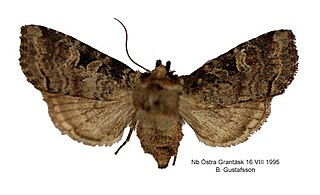
Hillia iris, the iris rover, is a species of cutworm or dart moth in the family Noctuidae. It was described by Johan Wilhelm Zetterstedt in 1839 and is found in North America.
Chaetaglaea fergusoni, or Ferguson's sallow moth, is a moth in the family Noctuidae. It was described by Vernon Antoine Brou Jr. in 1997 and is found in North America.

Lithophane grotei, commonly known as Grote's pinion or Grote's sallow, is a species of moth in the family Noctuidae. It was first described by Riley in 1882 and it is found in North America.
Brachylomia sierra is a moth in the family Noctuidae, native to North America. The species was first described by James T. Troubridge and J. Donald Lafontaine in 2007.















